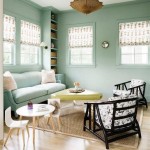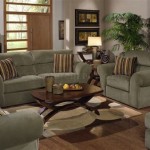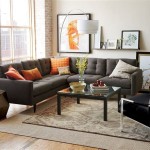Modern Minimalist Living Room Design: A Comprehensive Guide
Modern minimalist living room design focuses on creating a serene and uncluttered space that emphasizes functionality, clean lines, and a carefully curated selection of essential elements. This design philosophy prioritizes quality over quantity, fostering an environment conducive to relaxation and mental clarity. The minimalist aesthetic often incorporates neutral color palettes, natural materials, and strategic lighting to achieve a sophisticated and timeless appeal. Understanding the core principles and practical application of these elements is crucial for successfully implementing minimalist design in a living room.
A fundamental aspect of minimalist design is the elimination of unnecessary items. This decluttering process aims to reduce visual noise and create a sense of calm. Each object within the space should serve a purpose, whether functional or aesthetically significant. This intentional curation promotes a feeling of spaciousness and allows the architectural features of the room to take center stage.
Key Elements of Modern Minimalist Living Room Design
Several key elements contribute to the overall success of a modern minimalist living room design. These include color palette, furniture selection, material choices, lighting, and the incorporation of negative space. Understanding how these elements interact and complement each other is essential for achieving a cohesive and visually appealing minimalist aesthetic.
Color Palette: The selection of a restrained color palette is paramount in minimalist design. Neutral tones such as white, gray, beige, and cream form the foundation of the space. These colors provide a backdrop for the other elements of the room and contribute to a sense of airiness and light. While neutral colors dominate, subtle accents of color can be incorporated through artwork, textiles, or decorative objects. However, these accent colors should be used sparingly to maintain the overall minimalist feel.
Furniture Selection: Minimalist furniture is characterized by its clean lines, simple shapes, and functional design. Pieces should be well-crafted and durable, emphasizing quality over ornate detailing. Multifunctional furniture can be particularly effective in minimalist spaces, as it allows for flexibility and reduces the need for multiple items. For example, a sofa with built-in storage or a coffee table that can be converted into a workspace can maximize space and functionality.
Material Choices: Natural materials play a significant role in minimalist design. Wood, stone, concrete, and metal are often incorporated to add texture and warmth to the space. These materials should be used in their natural state, or with minimal finishing, to highlight their inherent beauty. The combination of different textures can create visual interest and prevent the space from feeling sterile or cold. The use of sustainable and eco-friendly materials further aligns with the minimalist ethos of mindful consumption.
Lighting: Lighting is crucial for setting the mood and enhancing the minimalist aesthetic. Natural light should be maximized whenever possible through the use of large windows and minimal window treatments. Artificial lighting should be carefully planned to provide both ambient and task lighting. Recessed lighting, simple pendant lights, and floor lamps with clean lines are common choices in minimalist living rooms. Dimmable lighting controls allow for adjusting the light levels to create different atmospheres.
Negative Space: Negative space, or empty space, is just as important as the objects within the room. It allows the eye to rest and prevents the space from feeling cluttered or overwhelming. Strategic use of negative space can highlight the architectural features of the room and create a sense of balance and harmony. By deliberately leaving areas open and uncluttered, the minimalist design allows for a greater appreciation of the individual elements within the space.
Practical Application of Minimalist Design Principles
Implementing minimalist design principles requires a deliberate and thoughtful approach. It is not simply about removing items; it is about creating a space that is both functional and aesthetically pleasing. The following steps can help guide the practical application of minimalist design in a living room.
Decluttering and Purging: The first step in creating a minimalist living room is to declutter and purge unnecessary items. This involves carefully evaluating each object in the room and deciding whether it is truly needed or serves a meaningful purpose. Items that are no longer used or loved should be donated, sold, or discarded. This process can be challenging, but it is essential for creating a minimalist space.
Planning and Layout: Once the room has been decluttered, it is important to plan the layout and arrangement of the remaining furniture and objects. Consider the flow of traffic and how the space will be used. Arrange furniture to create comfortable seating areas and optimize the use of natural light. Create a focal point in the room, such as a fireplace or a piece of artwork, and arrange the furniture accordingly.
Storage Solutions: Storage is key to maintaining a minimalist living room. Invest in storage solutions that are both functional and aesthetically pleasing. Built-in shelving, hidden storage compartments, and minimalist cabinets can help keep clutter out of sight. Choose storage solutions that complement the overall design of the room and blend seamlessly with the other elements.
Accessorizing Strategically: While minimalist design emphasizes simplicity, it does not mean that accessories should be completely avoided. Instead, accessories should be chosen carefully and used strategically to add personality and visual interest to the space. A few well-chosen pieces of artwork, a textured rug, or a collection of plants can add warmth and character to the room without overwhelming the minimalist aesthetic. Remember to prioritize quality over quantity and choose accessories that are meaningful and contribute to the overall design.
Maintaining a Minimalist Lifestyle: Creating a minimalist living room is just the first step. Maintaining a minimalist lifestyle requires a conscious effort to avoid accumulating unnecessary items and to regularly declutter the space. This involves being mindful of purchases and choosing quality over quantity. By adopting a minimalist mindset, it is possible to maintain a clutter-free and serene living environment over the long term.
Benefits of a Minimalist Living Room Design
Adopting a minimalist approach to living room design offers numerous benefits, both practical and psychological. The focus on simplicity and functionality can lead to a more organized, peaceful, and enjoyable living space.
Reduced Stress and Anxiety: A cluttered and disorganized living room can contribute to stress and anxiety. By eliminating unnecessary items and creating a more organized space, minimalist design can help reduce these feelings and promote a sense of calm and well-being. The clean lines and uncluttered surfaces create a visually soothing environment that is conducive to relaxation.
Increased Productivity and Focus: A minimalist living room can also enhance productivity and focus. The absence of distractions allows for greater concentration and mental clarity. This can be particularly beneficial for individuals who work from home or who need a quiet space to relax and unwind.
Improved Aesthetics and Functionality: Minimalist design prioritizes both aesthetics and functionality. The focus on clean lines, simple shapes, and natural materials creates a visually appealing space that is also highly functional. The strategic use of storage solutions and multifunctional furniture ensures that the room is both beautiful and practical.
Environmentally Conscious Living: Minimalist design aligns with environmentally conscious living by promoting mindful consumption and reducing waste. By choosing quality over quantity and investing in durable, sustainable materials, individuals can minimize their environmental impact and create a more eco-friendly living space.
Easier to Clean and Maintain: A minimalist living room is typically easier to clean and maintain than a cluttered one. The absence of unnecessary items reduces the amount of dusting and cleaning required. This can save time and effort, allowing for more time to relax and enjoy the space.
Modern minimalist living room design, when implemented thoughtfully, can transform a living space into a sanctuary of calm, functionality, and timeless style. By adhering to the core principles of simplicity, purposeful curation, and the conscious use of space and materials, individuals can create a living environment that supports both their aesthetic preferences and their overall well-being.

30 Minimalist Living Room Ideas

Before After Modern Minimalist Living Room Dining Bedroom Decorilla Online Interior Design

The Power Of Subtlety Neutral Tones For A Minimalist Living Room Design Modern Furniture By Caffe Latte Home

34 Modern Minimalist Living Rooms Designer Examples Tips

34 Modern Minimalist Living Rooms Designer Examples Tips

Serene Simplicity A Minimalist Living Room Oasis

Living Room Decor When Less Is More Alma De Luce

Minimalist Living Room Decor

How To Create A Modern Minimalist Living Room

Apartment Tour My Modern Minimalist Living Room








